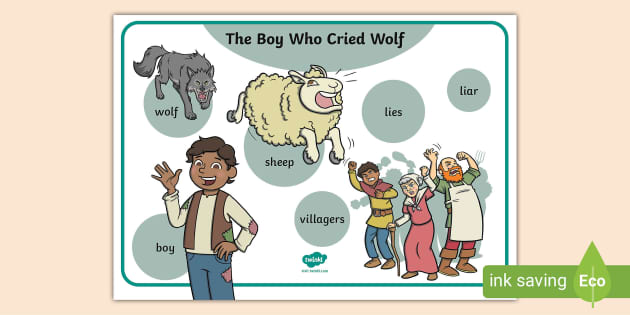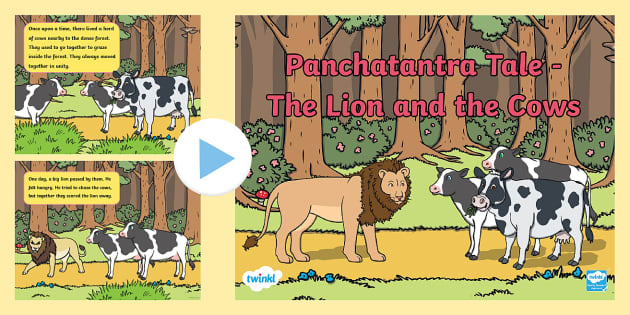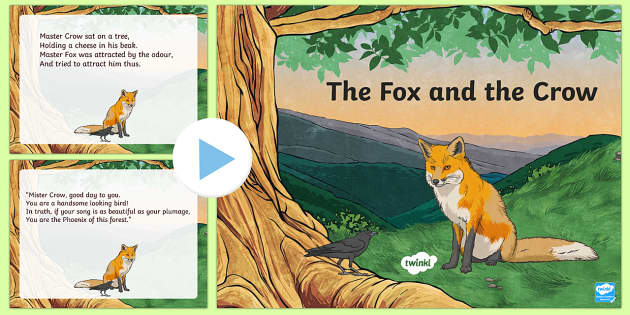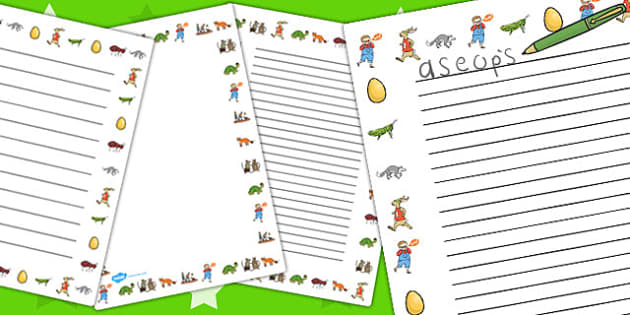
What is a Fable?
Fable


Fables for Kids – Definition and Examples
Fables are a brilliant way to learn about morals and important life lessons, as well as being excellent examples of storytelling.
Definition of a Fable
A fable is a type of story, often centring around characters that are animals, objects or natural elements. Fables weave in morals or a lesson of some kind into their endings.
Teaching Wiki Contents
- Characteristics of a Fables
- Fables - Examples
- History of Fables
- Teaching Video on Fables
- Teaching Resources on Fables
Features of a Fable
There are two defining features of a fable – their animals characters and moral lessons – but why do fables have these?
Anthropomorphisation
Anthropomorphisation, it sounds complex but put simply, it's the literary technique of giving human traits to a non-human character. In the case of fables, it’s usually animals, objects, and elements (like the wind) that are anthropomorphised.
This is for several of reasons. Firstly, it makes the story lighter and more obviously fictional, which in turn makes it easier for people to take in the moral of the story without feeling like it’s personal or potentially insulting. This also encourages the reader or listener to pay close attention to the story to see whether the moral applies to them.
Secondly, many animals already have physical attributes, like a hare being fast and a tortoise being slow. Others may have stereotypes or personality traits that humans have assigned to them, like a fox being cunning. This helps the storyteller give a sense of the character to the audience in a short amount of time, as fables are traditionally short stories.
Morals and Lessons
Despite the range of characters and settings that fables can have, one thing they all have in common is that they teach the reader a lesson. For many people, fables have been used as a tool to teach children and young people about morals, the difference between right and wrong, good manners, and the consequences that can happen if you forget them.
Teaching people these lessons at a young age by using stories, as opposed to waiting until they get old enough to make the mistakes themselves, allows children to learn these lessons safely. Fables help us learn how to become well-rounded, polite, and conscientious people ready to be a part of our community.
Put the features of a fable in the spotlight with this informative poster.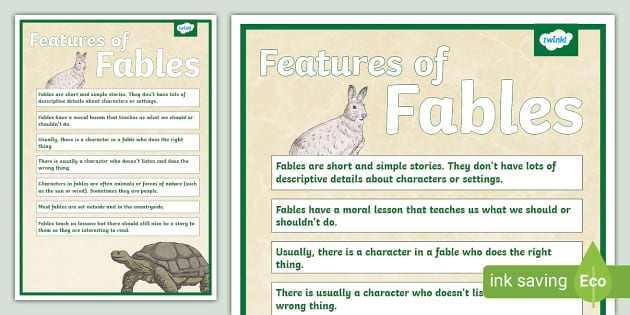
Fables - Examples
Many fables have become incredibly popular over the centuries. The three listed below were first written by Aesop but have been retold countless times by many different authors.
The Hare and the Tortoise
This fable tells the story of a hare and a tortoise who decide to have a race against each other. The hare is boastful, taunting the tortoise about how much faster he is. Brushing off the hare’s comments, the tortoise spends time before the race training, even though he doesn’t get much faster.
On the day of the race, many other animals come to watch. The pair set off, and the hare races ahead. Looking behind him, he sees that the tortoise has only just crossed the starting line. This makes the hare even more complacent, and he decides to take several naps whilst he goes around the course. The tortoise keeps on going regardless, and when the hare takes a long nap in the sun, the tortoise overtakes him.
The tortoise goes on to win the race, the cheering of the other animals waking up the hare. Unfortunately for the hare, no matter how fast he runs, he’s unable to catch up.
The moral of this story is slow and steady wins the race.
The Fox and the Crow
In this fable, a fox comes across a crow sitting on the branch of a tree with some cheese in her beak. The fox can smell the cheese and decides he wants to eat it, no matter what. At first, he tries to persuade the crow to come down from the tree, but the crow refuses, knowing that the fox will try to take the cheese if she does.
The fox then changes his tactics. He starts complimenting the crow on her feathers and how lovely they look. Then he tells the crow that he thinks she must have a beautiful voice and how much she wants to hear her sing. Flattered by the fox, the crow opens her beak to sing, dropping the cheese. The fox immediately eats the cheese, ignoring the crow’s protests, and carries on with his day.
The moral of this story is never believe flatterers.
The Boy Who Cried Wolf
In this tale, a young boy gets a job looking after a flock of sheep. He is told that if he ever sees a wolf, he has to ring a bell and call out, ‘Wolf!’
He is left with the sheep, but after a while, he starts to get bored. In fact, he gets so bored that he decides to ring the bell and cry out, ‘Wolf!’ The other shepherds run to scare the wolf, and the boy tells them that the wolf has already run away.
A few days later, the boy is bored once again. He rings the bell and calls ‘Wolf!’ and the shepherds run to him once again. This time, the shepherds are unimpressed: for a second time, they’ve run to help the boy, and the wolf has been nowhere to be found.
Shortly after this, the boy encounters a wolf. He rings the bell and shouts, ‘Wolf!’ but nobody comes to help him. The other shepherds hear his call but assume that he is lying once again. The wolf eats the shepherd’s fattest sheep, leaving the boy to explain to the shepherd what happened.
The moral of this story is that nobody believes a liar, even when they tell the truth.
History of Fables
From Aesop’s fables to Orwell’s ‘Animal Farm’, fables have been used as a form of moral storytelling for thousands of years.
Ancient Civilizations
For most people, the name most associated with fables is Aesop. Aesop is the credited author for many fables still read and told today. There is some debate around Aesop’s life and if he even existed. Supposedly from Athens, Aesop lived in the 6th century BC and is said to have been enslaved before becoming a fabulist. A fabulist is the title given to somebody who writes fables.
There are hundreds of fables that have Aesop as the original author. Some of the best-known fables, such as ‘The Hare and the Tortoise’, ‘The Dog, the Cockerel, and the Fox’, and ‘The North Wind and the Sun’ are credited to Aesop.
The Panchatantra is a compilation of interwoven fables and poetry from ancient India. It’s viewed by many as a collection of stories that were usually passed down through oral tradition. The introduction of the Panchatantra was written by Vishnu Sharma and is dated anywhere between 100 BC and AD 500.
There have been many translations of the Panchatantra, including one into Pahlavi (Middle Persian) in the 6th century, a Greek translation in the 11th century, and a Hebrew translation in the 12th century.
Another ancient fable that has had a massive influence on the world is the story behind the Chinese zodiac. It’s unknown exactly how old this story is, but there is evidence of the use of the Chinese zodiac calendar dating back over 2,000 years ago.
The story of the Great Race explains how the different animals of the Chinese zodiac got their place. It has great cultural significance both within and outside of China, as the zodiac system is an integral part of holidays and celebrations and everyday life.
Middle Ages
Throughout the Middle Ages, there was a large increase in the popularity of fables, along with many other forms of storytelling. One author responsible for this was Marie de France. She translated and retold a selection of Aesop’s fables, as well as writing lays (love stories), poetry and verse.
Marie lived in the 12th century, and it’s assumed that she was well-educated as she was fluent in both Latin and French, and most probably English as well. Although she is one of the first recorded female writers, very little is known about her life or how she came to write these fables. In the epilogue of her book, ‘Fables’, she says that she translated the stories for a count, so it’s thought she must’ve had some social standing.
The Middle Ages also saw the rise of the Beast Epic. This type of narrative follows a very similar format to a fable, featuring anthropomorphised characters and strong morals, but it is much longer text than the traditional fable. These Beast Epics often parodied the traditional epics that were popular at the time.
Character tropes used in shorter fables, such as the trickster fox, made appearances in Beast Epics, often causing trouble amongst the animal court and highlighting the issues of political and religious institutions in an entertaining way.
20th Century Onwards
A rise in the popularity of children’s literature in the 19th century allowed the fable to become a popular form once again. In the 20th century, however, fables started to take a more serious tone, with the stories being aimed at adults.
One of the best-known modern fables is George Orwell’s allegory of the Stalinist regime, ‘Animal Farm’. Published in 1945, ‘Animal Farm’ takes on many of the tropes of the fable, specifically the Beast Epic. Its longer form gives Orwell the space to demonstrate the dangers of propaganda and political manipulation through the lens of barnyard animals.
The 1954 animated film adaptation of ‘Animal Farm’ managed to push the tropes of the fable even further, making the cartoon animals even more fairytale-like.
Teaching Video about The Boy Who Cried Wolf
Teaching Resources on Fables
If you’d like to teach your children about fables, have a look at some of the brilliant Twinkl resources listed below.
Fox and the Crow Aesop's Fables
This PowerPoint is perfect for telling the tale of ‘The Fox and the Crow’ to your children. It’s illustrated, making it super engaging and a great addition to any lessons or assemblies.
KS1 The North Wind and the Sun: A Fable Differentiated Reading Comprehension Activity
Use this reading comprehension activity to help your children improve their comprehension skills and explore the lesson of ‘The North Wind and the Sun’. There are three versions available in this download, so you can choose which one is most suitable.
Aesop's Fables Page Borders
Let your children have a go at writing their own fables using these fabulous page borders. The lovely illustrations ensure that any work your children do will look great on display.
 Home
Home  Membership
Membership  TwinklCares
TwinklCares  Create
Create  Blog
Blog 

